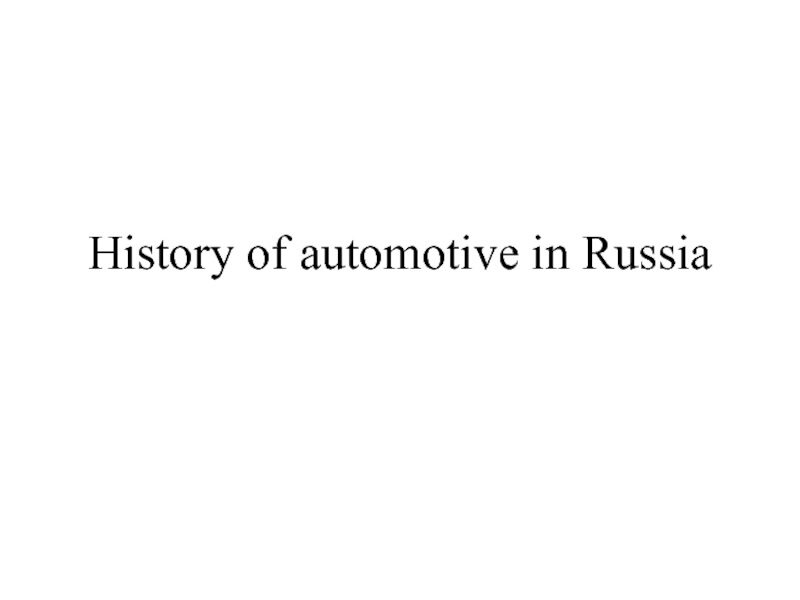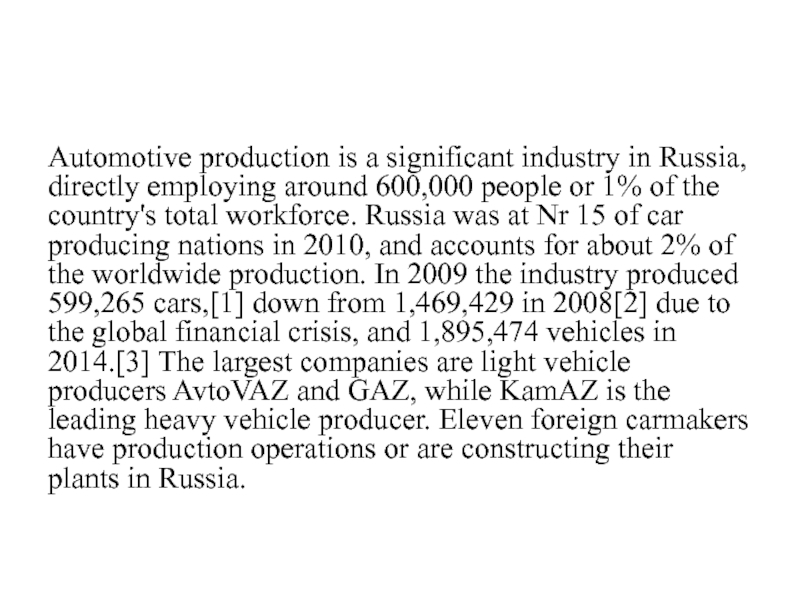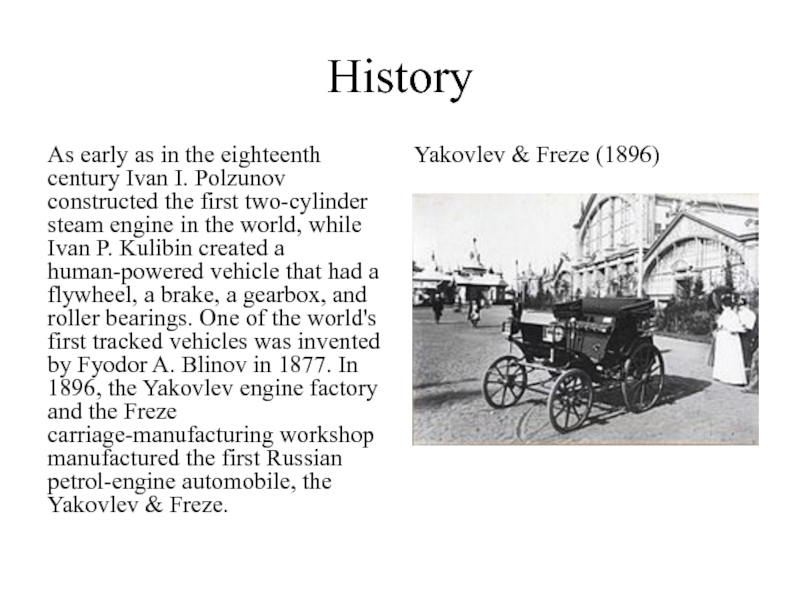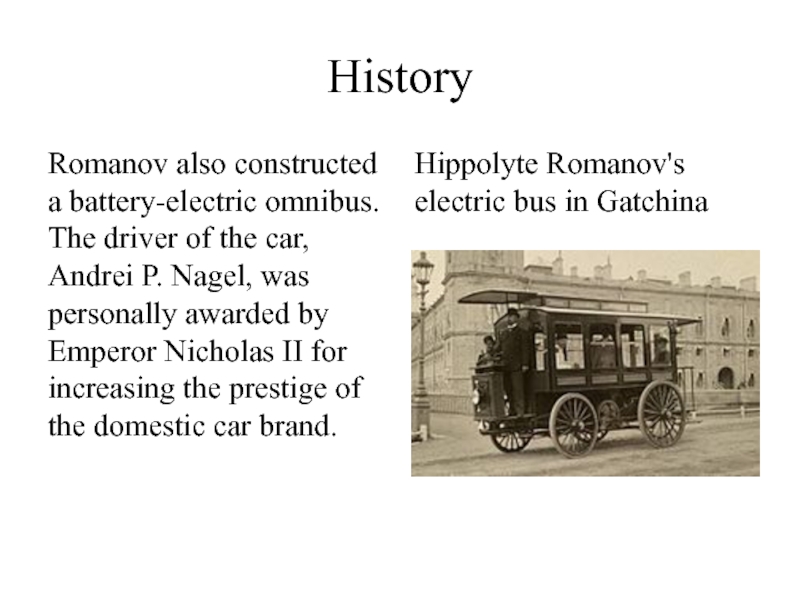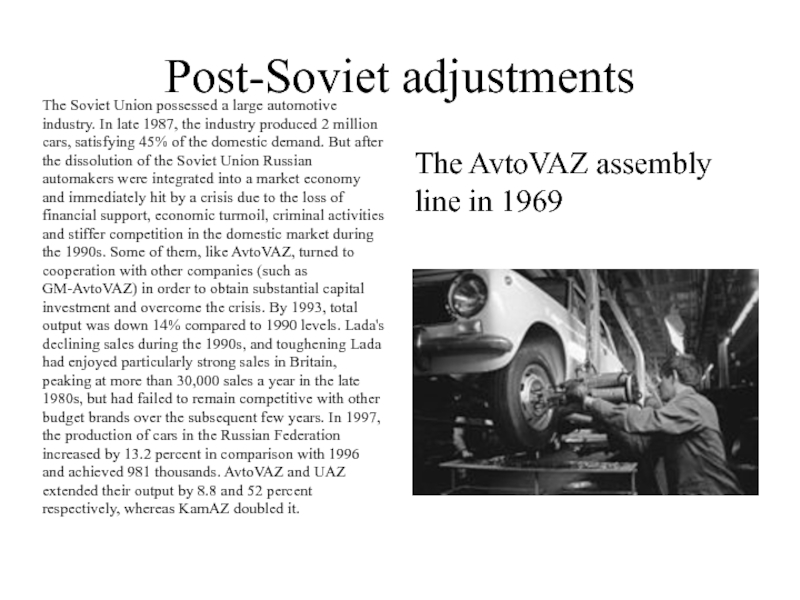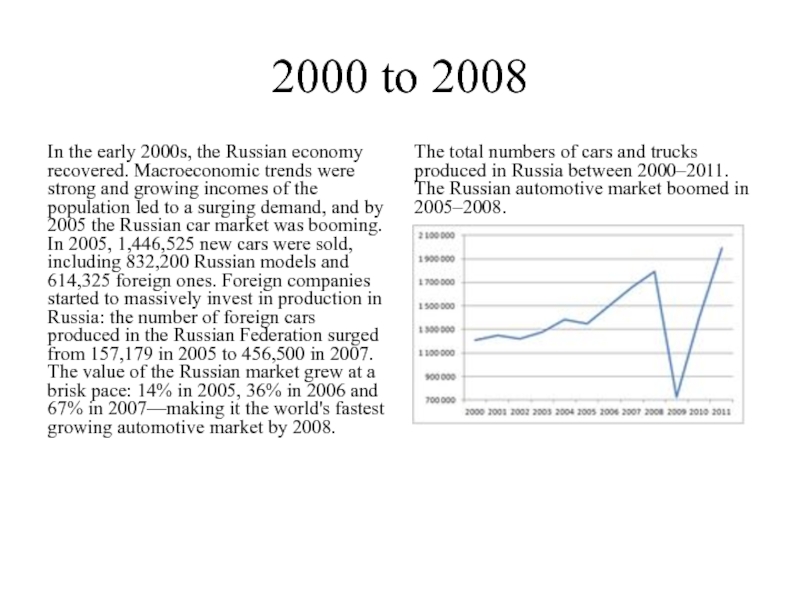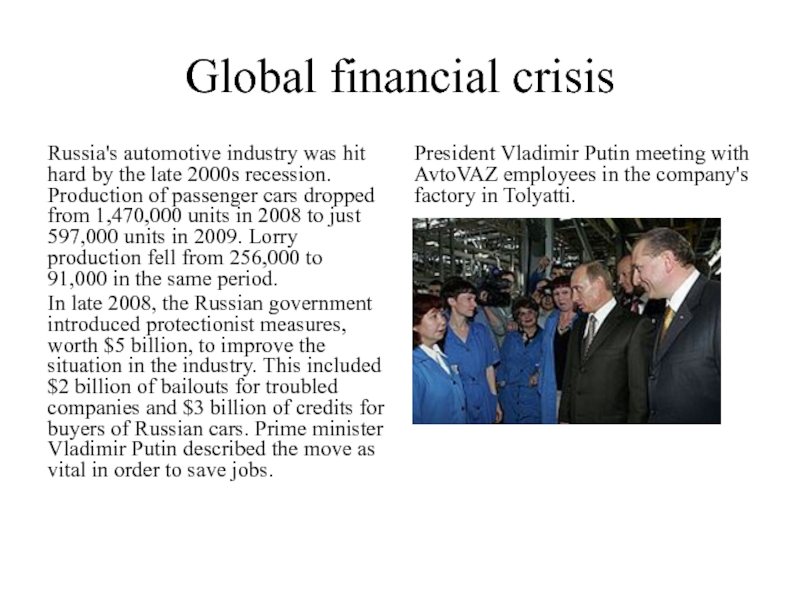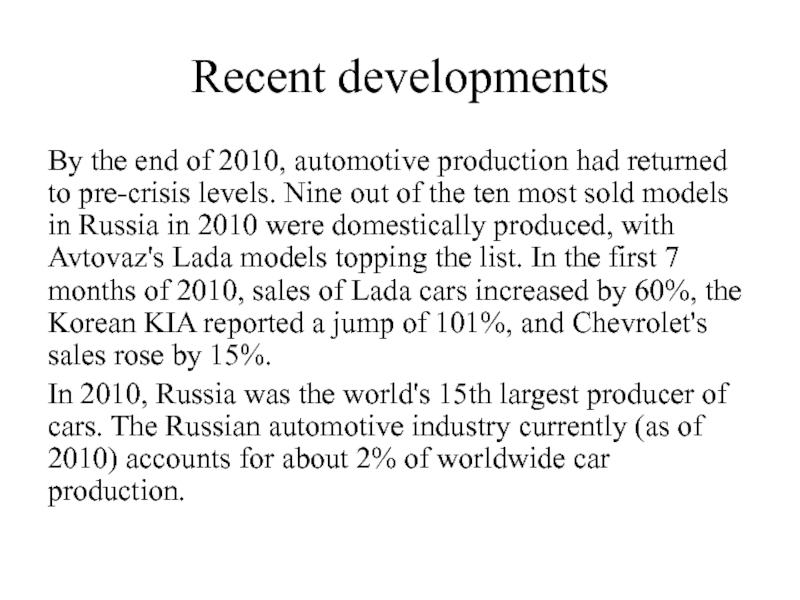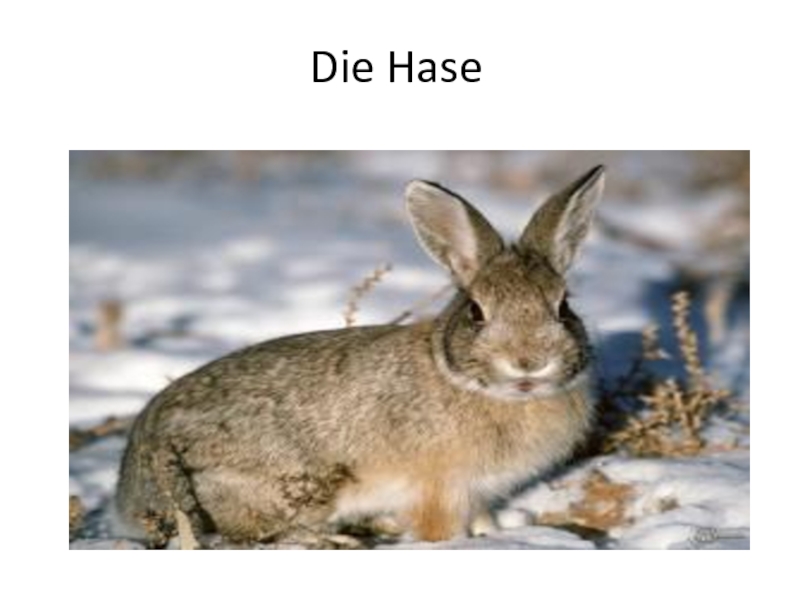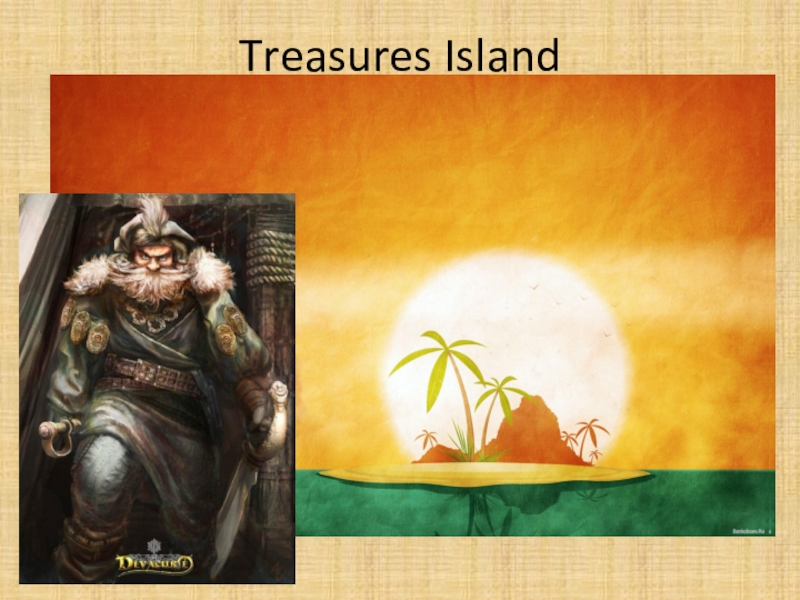- Главная
- Разное
- Образование
- Спорт
- Естествознание
- Природоведение
- Религиоведение
- Французский язык
- Черчение
- Английский язык
- Астрономия
- Алгебра
- Биология
- География
- Геометрия
- Детские презентации
- Информатика
- История
- Литература
- Математика
- Музыка
- МХК
- Немецкий язык
- ОБЖ
- Обществознание
- Окружающий мир
- Педагогика
- Русский язык
- Технология
- Физика
- Философия
- Химия
- Шаблоны, фоны, картинки для презентаций
- Экология
- Экономика
Презентация, доклад История автоматизации в России
Содержание
- 1. Презентация История автоматизации в России
- 2. Automotive production is a significant industry in
- 3. HistoryAs early as in the eighteenth century
- 4. HistoryRomanov also constructed a battery-electric omnibus. The
- 5. Post-Soviet adjustmentsThe Soviet Union possessed a large
- 6. 2000 to 2008In the early 2000s, the
- 7. Global financial crisisRussia's automotive industry was hit
- 8. Recent developmentsBy the end of 2010, automotive
- 9. Thank you for your attention!
Слайд 2Automotive production is a significant industry in Russia, directly employing around
Слайд 3History
As early as in the eighteenth century Ivan I. Polzunov constructed
Yakovlev & Freze (1896)
Слайд 4History
Romanov also constructed a battery-electric omnibus. The driver of the car,
Hippolyte Romanov's electric bus in Gatchina
Слайд 5Post-Soviet adjustments
The Soviet Union possessed a large automotive industry. In late
The AvtoVAZ assembly line in 1969
Слайд 62000 to 2008
In the early 2000s, the Russian economy recovered. Macroeconomic
The total numbers of cars and trucks produced in Russia between 2000–2011. The Russian automotive market boomed in 2005–2008.
Слайд 7Global financial crisis
Russia's automotive industry was hit hard by the late
In late 2008, the Russian government introduced protectionist measures, worth $5 billion, to improve the situation in the industry. This included $2 billion of bailouts for troubled companies and $3 billion of credits for buyers of Russian cars. Prime minister Vladimir Putin described the move as vital in order to save jobs.
President Vladimir Putin meeting with AvtoVAZ employees in the company's factory in Tolyatti.
Слайд 8Recent developments
By the end of 2010, automotive production had returned to
In 2010, Russia was the world's 15th largest producer of cars. The Russian automotive industry currently (as of 2010) accounts for about 2% of worldwide car production.
